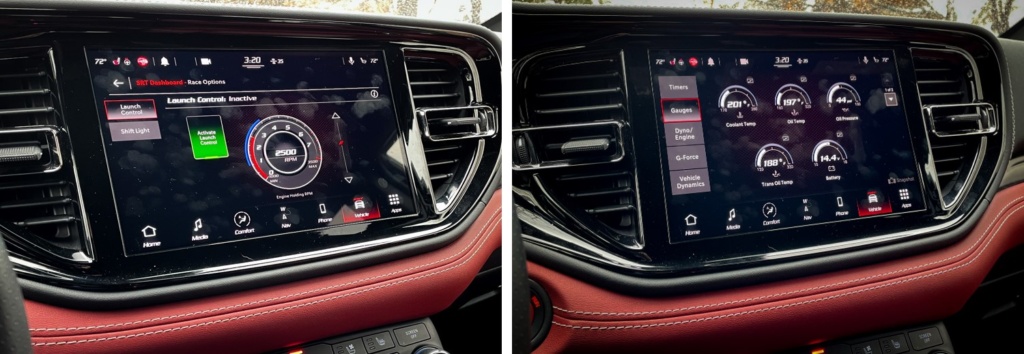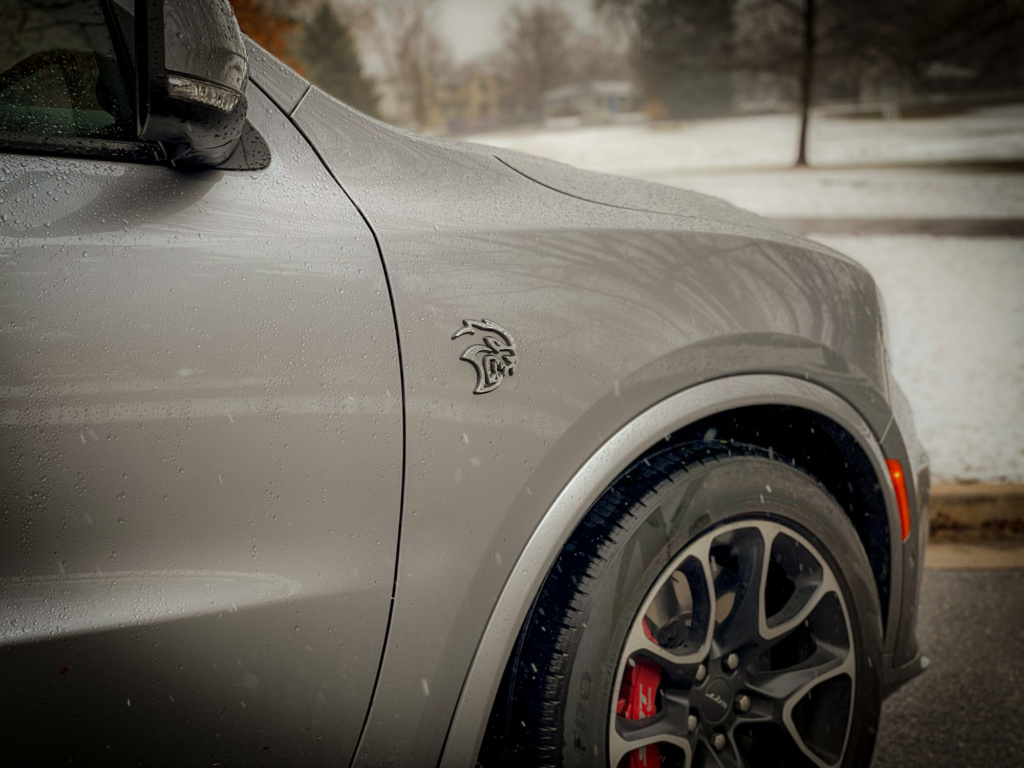
The Dodge Durango SRT Hellcat is an instant classic. It’s a single-year production run of an everyday three-row crossover that’s been stuffed with one of the rowdiest and most powerful combustion engines ever produced. And as the world pushes for EV’s and manufacturers shy away from engines with monstrous fuel appetites, there’s an undeniable realization that this is not just a special vehicle, it’s also the last of its kind.

Despite the Durango’s 10-year old design, its heavy-duty unibody underpinnings were quite forward-thinking back in 2011. Today, it continues to deliver the on-road handling manners that customers have come to expect without abandoning the stout hauling capability that its previous generations’ body-on-frame chassis delivered.

It’s unlikely that the development engineers from over a decade ago could have foreseen the insane level of performance (or the physically large engine) that the SRT engineers would bestow on the Durango, but the chassis is so good at handling the extra power, that it could easily convince one otherwise.
That power arrives courtesy of a 6.2-liter supercharged V8 that is always at the ready and looking for excuses to demonstrate its 710-peak horsepower potential. As one might imagine, the engine is incredibly powerful at any RPM and even encourages running up through the revs and its soundtrack is simply awesome. The eight-speed transmission is a strong performer too and provides a blend of smooth and fast gear changes that enables a relentless trajectory of acceleration. Its first several gears enable very fast sprints and Dodge says it’ll do the 0-60 mph sprint in just 3.5 seconds. Stay in the throttle and Durango will hit 180 miles per hour. But this Durango SRT Hellcat is more than just a straight-line speed freak.

Hustle it through the tight canyon curves and its performance-tuned permanent all-wheel-drive system distributes power with the utmost expertise. Applying full power when coming out of a turn is amazingly drama-free as there is no steering angle correction needed to maintain a steady arc. This is all the more remarkable considering the Durango’s significant 5,700 lb curb weight and all-season-rated (Pirelli) tires. It also proved adept at plowing through a fresh 8-inches of snow on the road.

And whether it’s exercising the full performance capability on a track or towing at its maximum 8,700 lbs (greater than the all-new Tahoe) rating, the SRT team ensured that the Hellcat can maintain peak performance and reliability with purposeful features such as a cast-iron engine block, a forged-steel crankshaft, sodium-filled intake valves, and enhanced dedicated cooling systems. In fact, the large cooling fans are so loud that they can cause a bit of a disturbance when parking near an outdoor seating area or patio. It also takes the powertrain quite a while to fully warm up to operating temperatures – sacrifices for an engine that won’t overheat during those track days.

The plain-Jane body sides go without any exaggerated fender bulges or outrageous ground effects yet the performance details are all around. In front, larger openings in the grille and removed fog lights from the bumper contribute to a cooler air intake charge and additional mechanical cooling performance. The front lower chin spoiler and upper rear spoiler have been revised to provide additional downforce and overall high-speed balance. Otherwise, the SRT Hellcat looks very similar to the Durango SRT 392 (6.4-liter V8) and Durango R/T with the 5.7-liter V8. If it weren’t for the supercharger’s signature whine and the true-dual exhaust’s boisterous noises (at all speeds), this vehicle’s specialness would likely go unnoticed by most.

Just as awesome as the engine’s power is, it significantly compromises the Durango as a practical daily driver. Besides the near $90k price tag (about $30k more than the comparable 5.7-liter V8 model), the Hellcat’s prominent exhaust noise drones through the cabin even when lightly accelerating and my 11 mpg rating (albeit with plenty of idling) will require over $4,000 in fuel costs annually according to the EPA.

The suspension is also clearly tuned for performance-car standards. Even its softest “street” setting, which does an admirable job of taking the sharp edge off of most bumps, the Durango is too stiff for those looking for a coddled commute. The front and second-row seats get the Hellcat embroidery and are heavily bolstered for tackling the curves while the steering wheel is very shapely and delightfully thick, however, the stitching is noticeably rough. The large 10.1-inch portrait infotainment touchscreen operates the latest UConnect 5 system, although it demonstrated that there are still bugs that remain to be worked out. At least it has over-the-air update capability.


Space-wise, the Durango meets the expectations of a three-row SUV but it’s not as space-efficient or flexible as some of its competitors. The second-row captain’s chairs tumble forward to allow for a good heave-how into the third row where there is enough room for slim adults for a short stint but escaping requires help as there is no easy-to-reach push-button release mechanism that has quickly become the standard for user-friendliness. With the third-row seatbacks up, there is still a decent amount of space in the cargo area.

But this talk of efficiency, whether in regards to fuel or space, is a moot point in the case of the Durango SRT Hellcat. Its outrageous performance is matched with an unassuming design, its reasonable price tag is amidst a limited production run, and it’s offered at a time when the industry is pivoting towards prioritizing fuel efficiency. It’s a bit audacious, a bit impolite, and always ready and willing to engulf your senses. The Durango SRT Hellcat is undoubtedly one of the most special vehicles of this era, and for that, it is also an instant classic.

